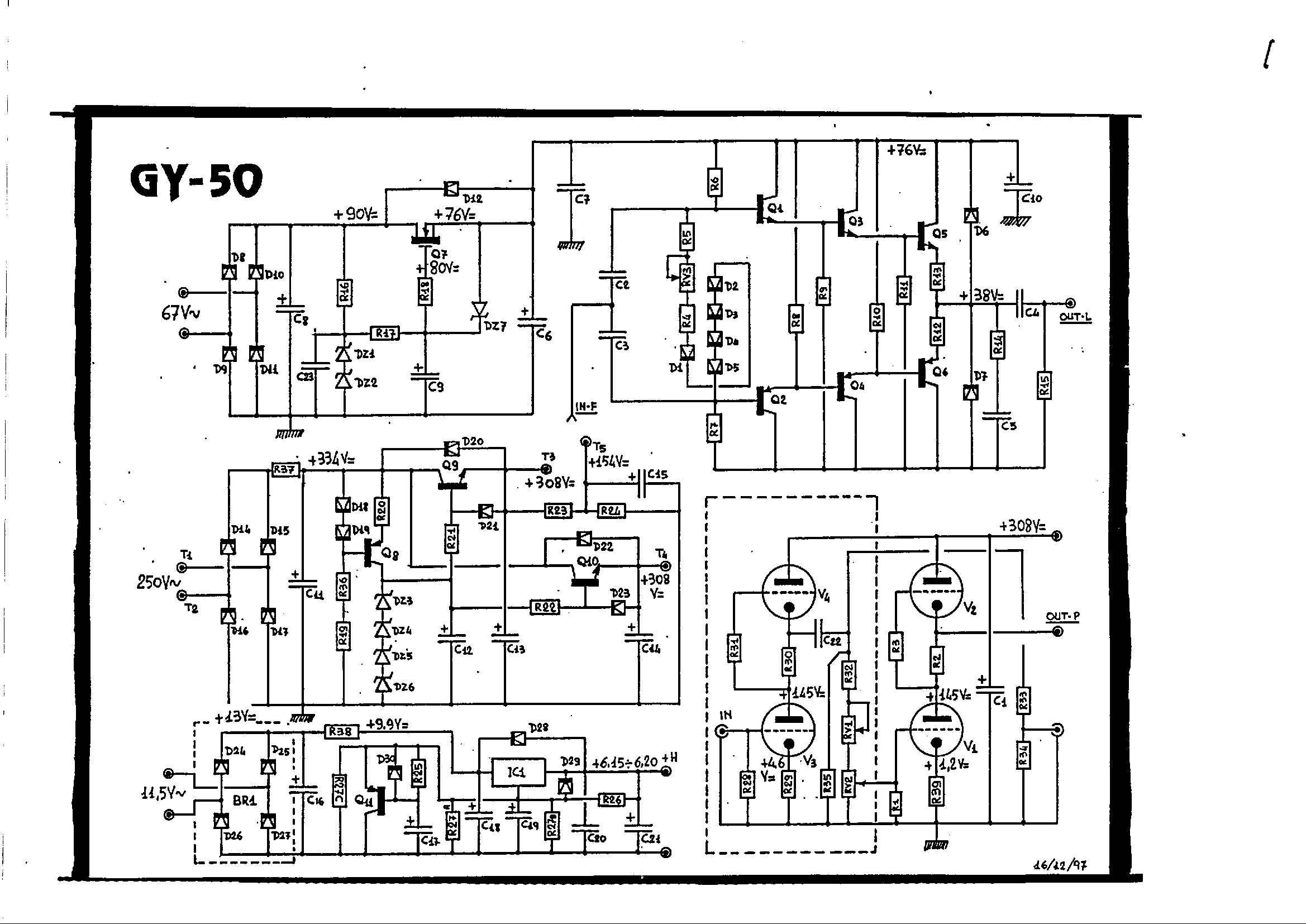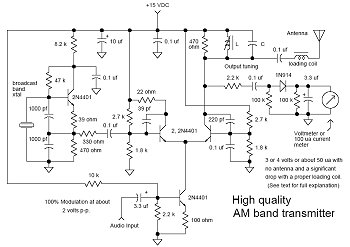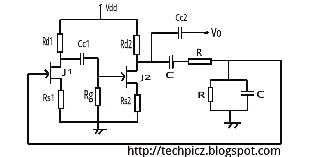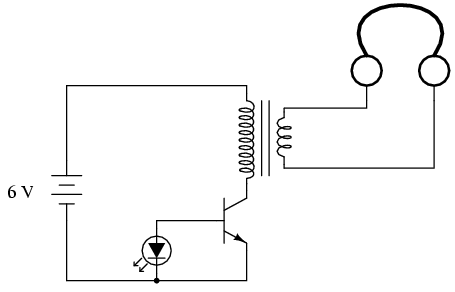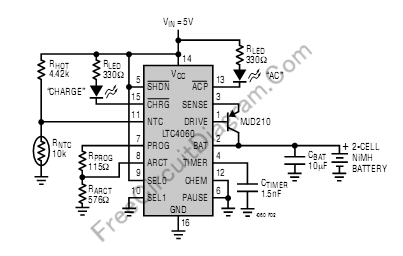
Fast Low Duty-Cycle Pulse Oscillator

This simple and symmetrical free-running generator has a 50-ohm output impedance, a pulse width of 100 ns, and complementary outputs that swing from ground to the power supply voltage. It operates within a power supply range of less than 1 V to more than 15 V, while maintaining low voltage and temperature drift and consuming minimal power. For oscillation to occur, each transistor must possess a gain greater than unity. This requirement restricts the resistor value (R) to a range of 1 kΩ to 1 Ω, as the gain will fall below unity when the transistor is saturated or when beta is low due to small collector currents. The two RC timing networks do not need to match, as the RC with the longest time constant will determine the frequency of oscillation.
The described free-running generator circuit is a fundamental oscillator design that utilizes complementary transistor pairs to generate square wave signals. The circuit typically consists of two NPN and PNP transistors arranged in a feedback loop, allowing for symmetrical output waveforms. The output characteristics include a 50-ohm impedance, making it suitable for driving various loads, such as RF circuits or digital logic inputs.
The pulse width of 100 ns indicates that the generator can produce high-frequency oscillations, making it suitable for applications requiring fast switching times. The ability to operate across a wide voltage range (from below 1 V to above 15 V) adds versatility, allowing the circuit to be integrated into various electronic systems without stringent power supply requirements.
The design emphasizes low power consumption and minimal drift in voltage and temperature, which is critical for applications in precision timing and signal generation. The gain condition for the transistors ensures that the oscillation remains stable; if the gain drops below unity, the oscillator will cease to function. Therefore, careful selection of resistor values is essential to maintain the desired operating point and ensure reliable performance.
The RC timing networks play a crucial role in determining the frequency of oscillation. By adjusting the resistor (R) and capacitor (C) values, the timing characteristics can be fine-tuned. The longest time constant among the RC pairs will dictate the overall frequency, allowing for flexibility in design and implementation based on specific application requirements. This feature is particularly advantageous in applications where frequency modulation or signal shaping is necessary.
Overall, this free-running generator circuit is a robust solution for generating precise, high-speed oscillations in a variety of electronic applications, combining simplicity with effective performance. This simple and symmetrical free-running generator has a 50- output impedance, a pulse width of 100 ns and complementary outputs that swing essentially from ground to the power-supply voltage. Moreover, it functions with a power supply range from < 1 to > 15 V and maintains a low voltage and temperature drift while consuming little power. For oscillation to occur, each transistor must have a gain greater than unity. This restricts the value of R to a range of 1 kfi to 1, because the gain will be less than unity when the transistor is saturated or when beta is low as a result of small collector currents.
The two RC timing networks do not have to match because the RC with the longest time constant will determine the frequency of oscillation.
The described free-running generator circuit is a fundamental oscillator design that utilizes complementary transistor pairs to generate square wave signals. The circuit typically consists of two NPN and PNP transistors arranged in a feedback loop, allowing for symmetrical output waveforms. The output characteristics include a 50-ohm impedance, making it suitable for driving various loads, such as RF circuits or digital logic inputs.
The pulse width of 100 ns indicates that the generator can produce high-frequency oscillations, making it suitable for applications requiring fast switching times. The ability to operate across a wide voltage range (from below 1 V to above 15 V) adds versatility, allowing the circuit to be integrated into various electronic systems without stringent power supply requirements.
The design emphasizes low power consumption and minimal drift in voltage and temperature, which is critical for applications in precision timing and signal generation. The gain condition for the transistors ensures that the oscillation remains stable; if the gain drops below unity, the oscillator will cease to function. Therefore, careful selection of resistor values is essential to maintain the desired operating point and ensure reliable performance.
The RC timing networks play a crucial role in determining the frequency of oscillation. By adjusting the resistor (R) and capacitor (C) values, the timing characteristics can be fine-tuned. The longest time constant among the RC pairs will dictate the overall frequency, allowing for flexibility in design and implementation based on specific application requirements. This feature is particularly advantageous in applications where frequency modulation or signal shaping is necessary.
Overall, this free-running generator circuit is a robust solution for generating precise, high-speed oscillations in a variety of electronic applications, combining simplicity with effective performance. This simple and symmetrical free-running generator has a 50- output impedance, a pulse width of 100 ns and complementary outputs that swing essentially from ground to the power-supply voltage. Moreover, it functions with a power supply range from < 1 to > 15 V and maintains a low voltage and temperature drift while consuming little power. For oscillation to occur, each transistor must have a gain greater than unity. This restricts the value of R to a range of 1 kfi to 1, because the gain will be less than unity when the transistor is saturated or when beta is low as a result of small collector currents.
The two RC timing networks do not have to match because the RC with the longest time constant will determine the frequency of oscillation.
